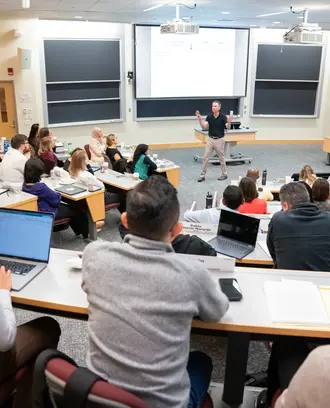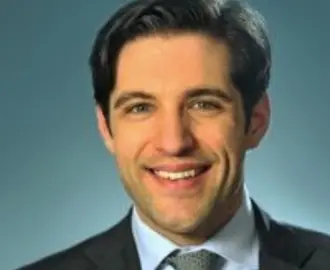Samia Bahsoun, EMBA '17
“Challenge Convention – Challenge yourself” is not just an MIT EMBA slogan. It is a phrase that tells you exactly what to expect during your journey in this program. It is a reference to the frameworks you will learn that extend beyond the 20-months of the program. These frameworks have impacted my professional and personal life for the past five years – and they have helped me make a positive impact on my businesses, community, and myself.
Is uncertainty using you or are you using it?
The one certainty you can expect from starting a company is uncertainty, but startups do not hold a patent on uncertainty. With COVID-19, uncertainty has taken pandemic proportions, infiltrating every aspect of our lives. Yet uncertainty has been with us since the beginning of time, and it is our response to uncertainty that laid the foundation of our civilization and will continue to determine its fate. Just like money matters amplify domestic issues unrelated to money and destroy relationships, uncertainty amplifies any internal, corporate, or social misalignment. For companies, small or large, these misalignments often manifest themselves externally in unmet expectations to consumers and shareholders; they can shake the foundation of communities at the core, resulting in the destruction of equity and often fatal losses.
We can let uncertainty use us or we can choose to use uncertainty as a wakeup-call, a catalyst for raw, disruptive innovation, and an opportunity to reshape corporate culture and strategy. We can use it to invite a new form of leadership.
Where do we start?
Do not let your solution disguise the problem
An important framework for any leader involves asking the question: What problem are you trying to solve? This is the most fundamental question one can ask, be it at the onset of a new venture, a movement, or in the midst of a crisis. Simple right? Not quite.
A simple and humorous example from school involves a son telling his dad that he needs a new car. The dad asks what the problem is with his current car. The son explains that the car is getting old. The dad replies that the boy’s parents are also getting old.
Can you relate to the story? I can. Back in 2015, just around the time I was submitting my application to the MIT EMBA program, I co-founded Capwave Technologies with the mission to “provide affordable broadband internet access and services – delivered by anyone, accessible by everyone.” My partners and I pooled together our savings, put a small team together, and were ready to launch a magic one-size-fits-all product. Within eight months of inception, we went from design to development to production, shipping 20 of our flagship products for a municipal pilot project. The trial was bumpy but ultimately successful. Mission accomplished, right?
Think back of the father and son story. In the son’s mind, a new car was the solution he wanted – not necessarily needed – to replace an old car, making the old car the problem. But was it? Did the car not start well, in which case it may just need a new battery or a new transmission? Did it consume too much gas? Did the oil leak? Did the car fail inspection? Does the son need a car that drives him locally from point A to point B, or does the son need to go cross country? Or does the son simply need a means of transportation? Which outcome mattered most, and which metric would determine success?
While Capwave prided itself with a new differentiated high-capacity Wi-Fi product in the market, did it solve the connectivity problem? Or was it a coverage problem? Or was it an adoption problem? Or a backhaul problem? A right of way problem? Instead of diagnosing the problem, we disguised the problem by the solution we wanted to present.
Like many companies, big and small, we fell in love with a new product idea and arbitrated by default that the absence of this one product was the problem we were solving — and it was not.
Moving forward in uncertainty
Today, close to 4 billion people remain unconnected. If we are tackling the connectivity issue, where does that metric need to be? By when? Which technology choice would we make? Which partnerships would we need? Which price point would we target? What type of organization would we structure?
That which provides you certainty is not necessarily your best, most innovative, or cost-effective solution to uncertainty. If Capwave’s mission remains the same in light of the pandemic and new FCC regulations, then the problem we need to solve needs to be re-examined and a new set of metrics established.
In times of extreme uncertainty, it is critical to clearly define the problem, articulate the desired outcome, and be able to measure it. We cannot let the presumed solution drive the diagnosis. We need to let the metrics speak for themselves and become the change agent.
Nothing is certain but uncertainty. This uncertainty can diffuse strategy and contract creativity, but you also can harness it to expand your reach and unveil opportunities you would have never imagined. It exposes the paradoxes and serves as a catalyst for solutions that you did not see before.
Samia Bahsoun, EMBA '17, is cofounder and CEO of Capwave Technologies in Asbury Park, NJ.



